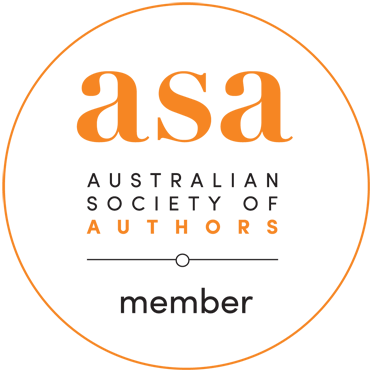- Home
- Blog
- Carbs, Sugars and Fibres
- Your daily bread - now fortified with iodine
Your daily bread - now fortified with iodine
Written by Catherine Saxelby
on Tuesday, 13 October 2009.
Tagged: FSANZ, health, milk, nutrition, salt

Since 2009, most bread in Australia is now being baked with iodised salt as part of a move to lift overall iodine intakes across the nation. At present, just under half the population - some 43 per cent of Australians - don't take in enough iodine. Following iodine fortification, this is estimated to drop to a low 5 per cent.
Only bread was chosen for fortification to ensure that we don't take in too much iodine (excess can be just as much as problem as deficiency). This is particularly important for children, who have a lower body weight and so are more sensitive to iodine excess, and for people with thyroid conditions. Iodised salt won't alter the colour or taste of bread. Bread labelled as ‘organic' will be exempt, as it is meant to offer a natural ‘untouched' alternative. So are bread mixes for baking your own bread at home.
Iodised table salt which contains 25 to 45 micrograms of iodine per gram of salt was once a good source but over the last 10 or so years, for sound health reasons, we've cut back on table salt.
I was surprised to learn that less than 5 per cent of table salt is sold as iodised salt. But the main source of salt is commercial foods like ham, bacon, cheese, crackers and spreads and in these the salt is rarely iodised salt.
From 2009, all bread must now be made with salt that has 25-65 mg of iodine per kg of salt. In Tasmania, a well-known area with soils low in iodine, bread has been used off and on since the 1950s as a successful way to deliver extra iodine to the population.
Iodine deficiency
- Iodine is essential for growth, physical health and brain function.
- Insufficient iodine can interfere with the normal brain development in babies and young children resulting in low IQs as their brains need thyroid hormone for proper development.
- If serious, it can result in poor mental development and slow thyroid function, ultimately producing goitre. Iodine can't be stored in the body so tiny amounts must be consumed regularly.
- Kids with iodine deficiency suffer poor control of body movements, hearing problems, have an IQ ten to 15 points below normal and are more likely to have attention deficit hyperactivity disorder (ADHD).
If you don't get enough iodine
Without enough, you may not be able to make the thyroid hormone. This can lead to hypothyroidism - a condition where a person's metabolism slows, they put on weight, become tired easily and feel the cold.
Severe iodine deficiency can seriously impair mental and physical growth, causing a condition known as cretinism, although this is usually only seen in developing countries like China and India. A milder form can be found in developed countries (where it's given the name of iodine deficiency disorder or IDD).
Foods for iodine
- Iodine is rather scarce in our food supply. Fish and seafood (prawns, crab, mussels, oysters) are the main sources, as well as seaweeds such as nori and kelp, which are common ingredients in Japanese cuisine, albeit at low levels.
- Moderate contents are found in dairy foods like milk and yoghurt (although contents have reduced in recent years) and eggs.
- Smaller quantities of iodine are found in vegetables and meat but the exact quantity depends on the concentration of iodine in the soils in which they were produced.
Where you'll get your iodine
| Food | Iodine in micrograms |
| Thick toast slice of iodine-fortified bread | 35 |
| Sandwich slice of iodine-fortified bread | 17 |
| 1 glass milk (full cream or reduced fat) | 50 |
| 120 g fillet of fish | 45 |
| 100 g can salmon | 30 |
Sea salt vs ordinary salt

Iodised salt is common in many countries as a way of delivering iodine, but is not used by the food industry, so foods such as ham, cheese, crackers, potato crisps, fries and olives do not contribute any iodine, even though they pack in a lot of salt. It's a pity that they couldn't also be enlisted to be made with iodised salt but there could be a downside - this move could result in us ingesting too much iodine.
Iodine from dairy sanitisers
We also used to get iodine from milk. Since the 1960s, dairy farmers used iodine-based sanitising agents to sterilise milk containers and milking equipment. Even though this was an accidental ‘contamineant', it topped up our iodine intake sufficiently to prevent any deficiency problems. But during the last 20 years, dairies have phased out the iodine sterilisers and switched to chlorine-containing-types, which has contributed to the emergence of iodine deficiency again.
Recommended daily iodine intake:
- 90 mcg for children 0 to 8 years
- 120 mcg for schoolchildren 6 to 13 years
- 150 mcg for adults and kids above 14
- 220 mcg for pregnant
- 270 mcg for lactating women.
During pregnancy when the demand for iodine (and other nutrients) is high, an iodine supplement is still a good idea. It's feared that many women don't eat that much bread so will not be benefiting from this new addition.
Most multivitamin supplements contain anywhere from 50 to 150 mcg of iodine. The recommended day's intake is 150 mcg for adults. Check the label.
More information on iodine

* Nutrition Aust has a good overview on iodine
* FSANZ says it shouldn't affect people with ‘iodine allergy' and thyroid conditions as it's only a modest 54 mcg extra a day.
The Good Stuff
The Boring Stuff
© 2024 Foodwatch Australia. All rights reserved
Author photo by Kate Williams
Website by Joomstore eCommerce






